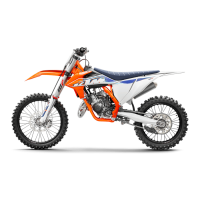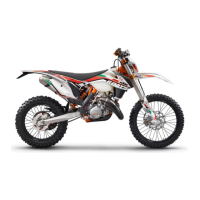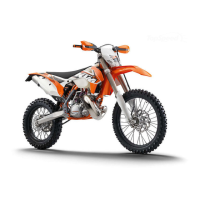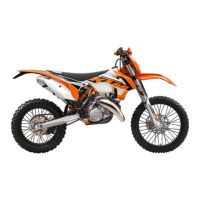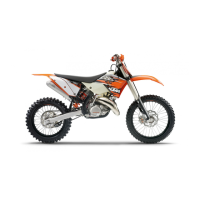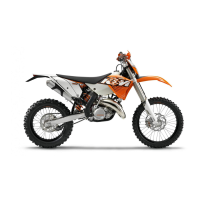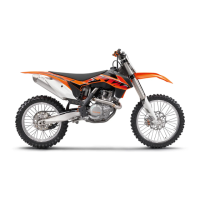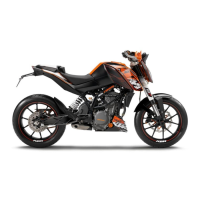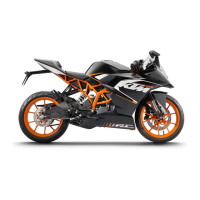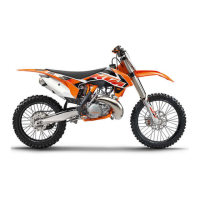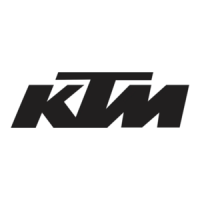
 Loading...
Loading...
Do you have a question about the KTM 125 EXE 2001 and is the answer not in the manual?
| Brand | KTM |
|---|---|
| Model | 125 EXE 2001 |
| Category | Motorcycle |
| Language | English |
Locate and record chassis and engine numbers for your motorcycle.
Adjusting and operating the clutch lever for smooth gear changes.
Using the hand brake lever for the front wheel brake.
Understanding the dashboard indicators and speedometer readings.
Proper use of the ignition switch for starting and powering the motorcycle.
Controls for lights, horn, and engine stop function.
Activating turn signals for indicating direction changes.
Procedures for safely filling the fuel tank with unleaded gasoline.
Managing fuel flow to the carburetor using the fuel tap positions.
Filling the two-stroke oil tank and using the choke for cold starts.
Operating the shift lever, kickstarter, and foot brake pedal.
Using the steering lock, center stand, and baggage carrier.
Adjusting compression and rebound damping on the front forks.
Adjusting compression and rebound damping on the rear shock absorber.
Essential checks to perform before every motorcycle ride.
Tips for safe and proper motorcycle operation and handling.
Instructions for the initial break-in period to ensure engine longevity.
Procedures for starting the engine when cold, warm, or flooded.
Safely engaging first gear and moving off.
Proper gear shifting and riding techniques for various conditions.
Correct braking techniques and warnings about brake system limits.
Steps for safely stopping the engine and parking the motorcycle.
Detailed maintenance tasks for the motorcycle's chassis and engine.
Step-by-step guide for removing and refitting the motorcycle seat.
Checking and adjusting the steering head bearings for play and smooth operation.
Adjusting the handlebar position for optimal rider comfort.
Procedures for breather plugs, dust sleeves, and spring preload adjustment.
Adjusting the spring preload on the rear shock absorber.
Maintaining the pivot bearing and checking/correcting chain tension.
Proper chain care, lubrication, and checking for wear.
General information on KTM disc brakes, pads, discs, and fluid.
Adjusting free travel and checking/refilling front brake fluid.
Inspecting front brake pads for wear and thickness.
Adjusting foot brake pedal and checking/refilling rear brake fluid.
Inspecting rear brake pads for wear and thickness.
Procedures for removing and mounting front and rear wheels.
Checking and adjusting tire pressure and spoke tension for safety.
Information on main fuse, headlight replacement, and battery charging.
Checking coolant level, system operation, and clutch lever adjustment.
Checking oil levels for hydraulic clutch and transmission, and changing transmission oil.
Diagnosing and resolving problems with engine starting and idling.
Addressing issues like engine not revving high or losing power.
Troubleshooting engine overheating and non-functional electrical parts.
Guidelines for cleaning the motorcycle's surfaces and components.
Precautions for storing the motorcycle during winter.
Proper procedures for storing the motorcycle and preparing it after storage.
Detailed technical data for the motorcycle's chassis components.
Detailed technical data for the motorcycle's engine and carburetor settings.
